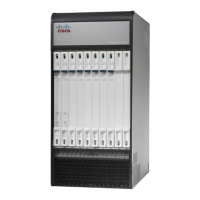Platforms with large configuration files can take up to 30 minutes to complete an SSD. Executing the
show support details command consumes system resources and may reduce traffic throughput.
Important
For releases prior to 20.0, an operator could initiate another SSD while an SSD was already running. In a
large configuration, the SSD request often timed out while waiting for the first one to complete. The operator
was not aware of the failure until the entire timeout expired. An operator could have more than one SSD
running simultaneously.
For release 20.0 and higher, if an SSD is in progress when the operator enters the show support details
command, StarOS responds with a warning message stating that an SSD is already in progress and the user
should try again later. The operator is restricted to running only one SSD instance at a time.
There are optional keywords to the show support details command that can target the SSD to only report
specific type of information. These keywords can reduce the amount of time required to generate the SSD/
For additional information about the show support details command, see the Exec Mode show Commands
(Q-S) chapter in the Command Line Interface Reference.
Configuring and Using the Support Data Collector
The task of collecting the support data is performed by a background CLI task called the record collector. The
administrator configures the Support Data Collector (SDC) via the CLI with the commands to be executed
on a periodic basis. The record collector always runs in the background and checks if there are records to be
collected.
When it is time to collect support data, the scheduler executes the configured sequence of CLI commands and
stores the results in a gunzipped (.gz) file on the hard-disk. This file is called an SDR (Support Data Record),
and represents a snapshot of the overall state of the system at that time.
Technical Assistance Center (TAC) personnel and local administrators can review the SDRs on-line or by
transferring them off the system. They may also wish to investigate the collector state information.
Refer to the Support Data Collector chapter for a complete description of SDC functionality.
ASR 5500 System Administration Guide, StarOS Release 21.5
166
Troubleshooting
Configuring and Using the Support Data Collector

